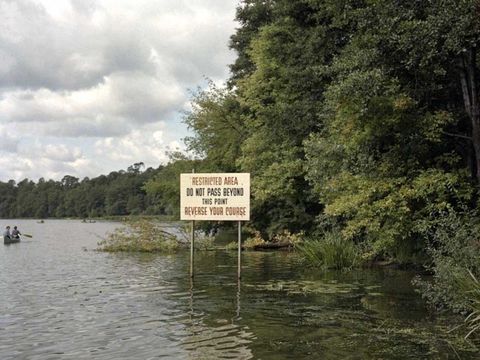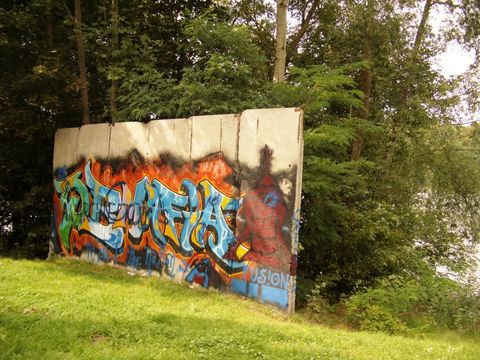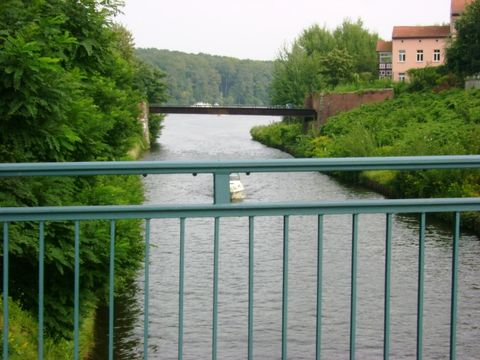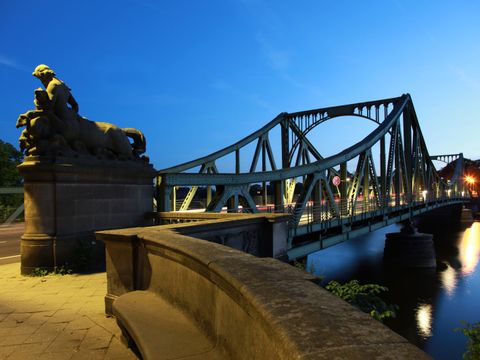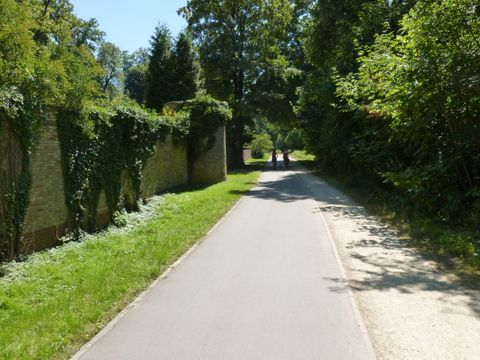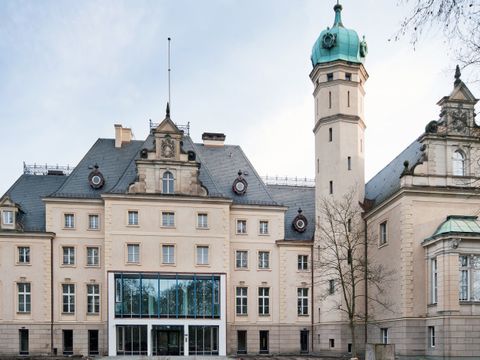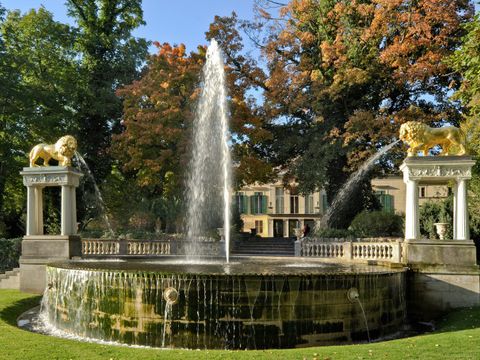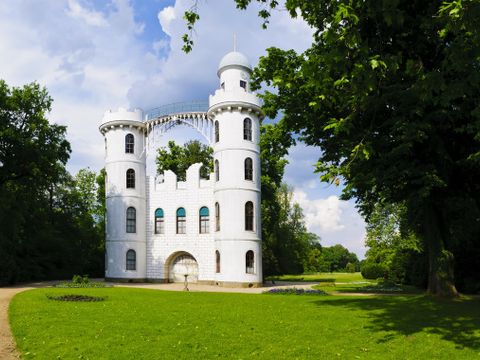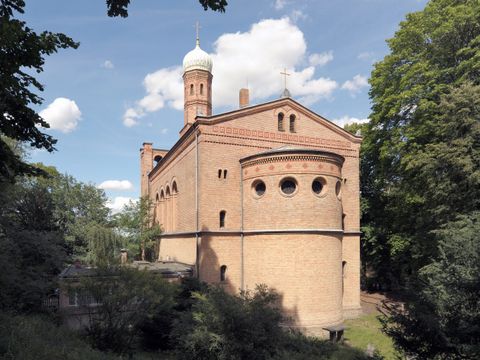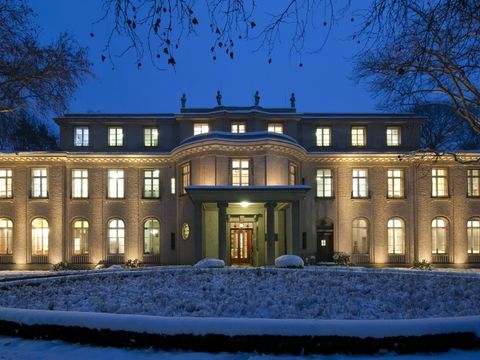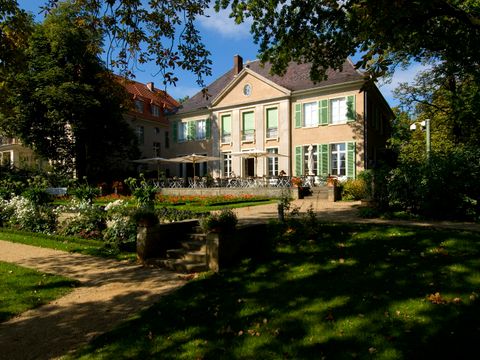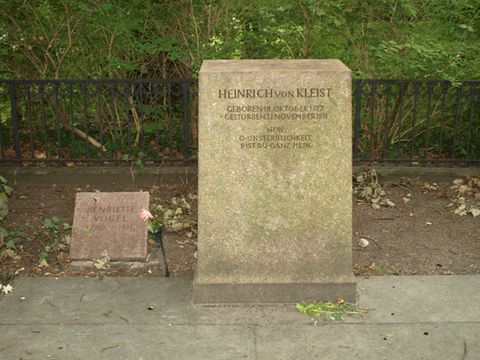Between the bridge and Königstrasse, you will find yourself in the former GDR exclave Klein Glienicke, a butterfly-shaped settlement that was once enclosed by the Wall. A Berlin Wall Trail info board on Waldmüllerstrasse tells the story of this exclave. The adjacent palaces and gardens, as well the hill Böttcherberg, belonged to West Berlin. Klein Glienicke could only be reached from Babelsberg via the bridge Parkbrücke, which was under constant surveillance by GDR border guards. Because Klein Glienicke was located in the border area, which was governed by special security regulations, an annotation was added to the ID cards of the people who lived there and visitors were required to apply for a permit. These restrictions meant that young people in particular tended to move away from Klein Glienicke. Unoccupied houses were torn down, and in 1979 the chapel had to be closed. In July 1973 two families managed to escape to West Berlin through a tunnel they had dug from the
basement of their house using only a child’s shovel and the blade of a spade. Because of the high water table, the “border protection atlas” had categorized their property as “unsuited to tunnel-building”; as a result, it was checked only sporadically. The fact that the water table drops considerably during hot spells had not occurred to the members of the GDR’s Ministry of State Security. Info markers dedicated to Horst Körner, Rolf Henniger, Norbert Wolscht, Rainer Gneiser, and Günter Wiedenhöft, all of whom died at the Wall, are also found on Waldmüllerstrasse.
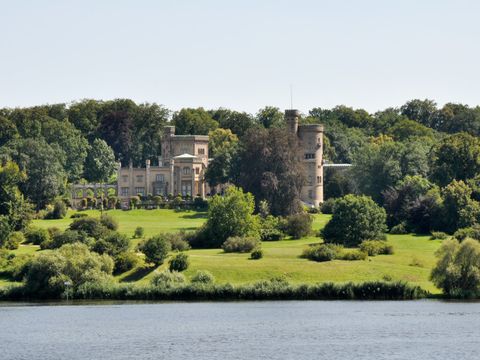

 German Sign language
German Sign language